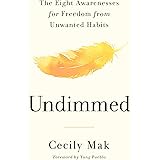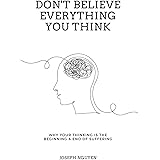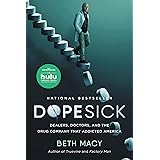The quest for personal and professional growth often feels like an endless loop of conventional advice: work harder, set more goals, track every metric. Yet, as the accompanying video powerfully articulates, this well-trodden path frequently leads to stagnation rather than true, transformative progress. Many find themselves overwhelmed, adhering to principles that sound like wisdom but function as limitations, ultimately feeling stuck despite their best efforts. The real challenge isn’t a lack of information or effort, but a fundamental misalignment in our approach to development.
To cultivate deep, sustainable, and meaningful personal and professional growth, a shift in perspective is essential. It requires abandoning the “usual boxes” and embracing unconventional strategies that challenge ingrained patterns of thinking and behavior. This journey is not about accumulating more tasks but about reshaping our mindset, allowing for reflection, resilience, and a willingness to deviate from the expected. The insights shared by Jim Rohn, a master of motivation, offer a potent framework for this kind of profound change, urging us to look beyond surface-level tactics and engage with the deeper mechanics of self-evolution.
Embracing Action Over Readiness for Exponential Personal Growth
One of the most profound unconventional tips for accelerating personal and professional growth is to commit to action before you feel entirely ready. The common belief is that confidence and certainty must precede significant undertakings; however, this often becomes a self-imposed barrier, leading to perpetual waiting. Readiness, as the video suggests, is largely a myth—an elusive feeling that rarely arrives in perfect synchronicity with opportunity. Instead, clarity and conviction are often a byproduct of forward motion, not a prerequisite for it.
Consider the psychological insights of Bandura’s Social Learning Theory, which emphasizes self-efficacy – our belief in our ability to succeed in specific situations. This self-efficacy is frequently built through mastery experiences, where individuals successfully perform a task, even if initially apprehensive. Studies reveal that small, consistent steps, even when accompanied by fear or uncertainty, progressively build competence and confidence. For instance, research published in the *Journal of Personality and Social Psychology* indicates that individuals who engage in “approach behaviors” despite anxiety tend to reduce their fear over time, developing stronger self-efficacy. This demonstrates that fear is merely a signal of uncertainty, not an indicator of inability, and moving through it is crucial for expanding our personal and professional horizons.
Therefore, cultivating the ability to initiate tasks while still feeling apprehensive is a vital skill for anyone committed to deep development. This doesn’t advocate for recklessness but for a conscious decision to make fear a companion, not a controller. It means trusting that taking that first, small, scary step—whether it’s launching a new project, learning a complex skill, or engaging in a challenging conversation—will organically generate the confidence and clarity required for subsequent actions. This approach transforms uncertainty from a “danger zone” into a growth zone, where significant breakthroughs are forged.
The Power of Scheduled Reflection: Intentional Thinking for Enhanced Professional Development
In a world obsessed with speed and constant activity, the idea of actively scheduling time solely for thinking might seem counterintuitive to professional growth. Yet, as highlighted in the video, many people struggle not with a lack of intelligence, but with a profound lack of dedicated thinking space. Their days are filled with reactive responses, operating on instinct rather than intention, leading to shallow decisions and a sense of busyness without true purpose.
Strategic reflection is not a luxury; it’s an imperative for deep professional development. Cal Newport, in his concept of “Deep Work,” champions focused, uninterrupted activity that pushes cognitive capabilities, often requiring structured blocks of time. This extends beyond task execution to critical thinking about one’s trajectory and choices. Neuroscientific research further supports the benefits of quiet contemplation, showing that periods of rest and reflection are crucial for memory consolidation, problem-solving, and creative insight. For example, studies on the brain’s “default mode network” demonstrate its heightened activity during states of mind-wandering and introspection, suggesting its role in self-referential thought and planning for the future.
Implementing this requires carving out protected, intentional slots in your calendar—even just 15-30 minutes daily or weekly—to sit with questions such as, “What’s working? What needs to change? What am I avoiding?” This structured thinking allows individuals to reconnect with their ‘why,’ ensuring that efforts are aligned with core values and long-term objectives. It transforms frenetic movement into focused momentum, leading to sharper decisions, increased confidence, and a more resonant presence in leadership roles. By prioritizing this “meeting with your mind,” you transition from a reactive participant to an intentional architect of your professional journey, deriving wisdom from depth rather than superficial information.
Cultivating Resilience: Learning to Lose Without Losing Yourself
Setbacks, failures, and disappointments are not optional; they are an inherent part of both personal and professional growth. However, what truly distinguishes those who achieve sustained success is their ability to navigate these losses without allowing them to redefine their identity or derail their spirit. The video emphasizes that most individuals are not destroyed by the loss itself, but by the negative interpretations they attach to it—equating a failed test with being unintelligent, or a job loss with worthlessness.
A resilient mindset, a cornerstone of enduring personal and professional expansion, involves separating outcomes from identity. Dr. Carol Dweck’s research on “growth mindset” offers compelling evidence for this approach. Individuals with a growth mindset view challenges and failures as opportunities for learning and improvement, rather than as definitive statements about their abilities or inherent value. This contrasts sharply with a fixed mindset, where failures are seen as evidence of personal inadequacy, often leading to withdrawal or shame. Statistics indicate that organizations fostering a growth mindset report higher levels of employee engagement and innovation, as fear of failure is mitigated, encouraging bolder experimentation.
This does not imply a suppression of emotion; it means fully acknowledging and processing the pain of loss, but refusing to let it take root in one’s self-worth. It involves extracting the valuable lessons and data from the experience, rather than internalizing the damage. By training ourselves to respond to adversity with reflection and adjustment, rather than self-condemnation, we build an unshakable foundation. This allows for “failing forward”—stumbling with strength, being humbled but not humiliated, and emerging wiser and more focused after periods of intense challenge. Such resilience ensures that every misstep becomes an educational moment, fortifying one’s character and commitment to long-term objectives in personal and professional spheres.
Measuring Progress in Silence: The Intrinsic Path to Sustainable Development
While public recognition and external validation often serve as motivators, true and sustainable personal and professional growth thrives when progress is measured in silence. The video wisely points out that building a growth trajectory solely on the foundation of applause or visibility makes it inherently unstable. Most significant breakthroughs are internal—the quiet triumph over procrastination, the discipline upheld when no one is watching, the hours spent refining work to an uncompromised standard.
Psychological research consistently highlights the distinction between intrinsic and extrinsic motivation. Intrinsic motivation, driven by internal rewards like enjoyment, interest, or personal satisfaction, is far more sustainable and leads to deeper engagement than extrinsic motivation, which relies on external rewards such as praise, money, or recognition. Studies, including meta-analyses of organizational behavior, suggest that over-reliance on external motivators can even diminish intrinsic motivation over time, leading to reduced creativity and autonomy. For instance, an analysis published in *Psychological Bulletin* found that external rewards can undermine intrinsic motivation when they are perceived as controlling rather than informational.
Therefore, cultivating the ability to celebrate one’s own progress in silence is critical for long-term development. This involves shifting focus from external signs of approval to internal standards and metrics: consistency, quality of self-talk, integrity, and alignment with personal values. By doing so, individuals reclaim their power, becoming less emotionally dependent on external validation. This fosters a profound sense of self-trust and inner conviction, allowing them to remain grounded and focused, regardless of external feedback. When growth is truly real and rooted within, it becomes a deeply ingrained posture of living, making external accolades a bonus rather than the essential fuel source.
Normalizing the Reset: Embracing Evolution in Personal and Professional Pathways
The journey of personal and professional growth is rarely linear; it’s often characterized by twists, turns, and the necessity to “start over.” Conventional wisdom sometimes attaches shame to beginning again, equating it with failure or weakness. However, as the video powerfully argues, true strength and maturity are found in the courage to reassess, to pivot, and to normalize the reset without apology. Starting over isn’t a setback; it’s an intelligent strategy, a demonstration of honesty, self-awareness, and a greater commitment to alignment than to stubborn adherence to an outdated path.
This concept resonates strongly with principles found in agile methodologies, widely adopted in technology and project management. Agile frameworks emphasize iterative development, continuous feedback, and the willingness to pivot or “fail fast” based on new information, rather than rigidly adhering to an initial plan. A report by the Project Management Institute (PMI) indicated that organizations using agile approaches reported 75% more successful projects than those using traditional methods, highlighting the value of flexibility and adaptation. Similarly, the “sunk cost fallacy” describes our human tendency to continue investing in a venture because of past investments, even when it’s clear the venture is no longer viable. Overcoming this fallacy by normalizing restarts is a sign of profound wisdom and strategic foresight.
Embracing the reset means giving yourself permission to close chapters, redefine success, and change directions without internalizing shame or guilt. It acknowledges that the person you were when you started is likely not the person you are becoming today, and this evolution demands new systems, strategies, and standards. This mindset allows for faster rebounds, quicker adjustments, and a more dynamic approach to progress. By removing the emotional burden from the act of beginning again, individuals accelerate their personal and professional trajectory, demonstrating flexibility in the face of pressure and building truly sustainable growth.
The Strategic Art of Subtraction: Clearing the Path for Deeper Clarity
In the relentless pursuit of personal and professional growth, the instinct is often to add more: another goal, a new habit, a more advanced tool. Yet, a profoundly unconventional and effective strategy, as highlighted by the video, is to get serious about subtraction. Growth is not solely built through addition; it is profoundly accelerated through the intentional and aggressive removal of anything that clutters clarity, drains energy, or distracts from core objectives.
This principle is echoed in the philosophy of essentialism, popularized by Greg McKeown, which advocates for “less but better.” Essentialists rigorously evaluate commitments, inputs, and activities, asking, “Is this absolutely essential?” If the answer is no, it’s eliminated. The scientific basis for this lies in concepts like decision fatigue, where the quality of decisions degrades after making many choices. By reducing unnecessary choices and commitments, we conserve mental energy for what truly matters. Research by Baumeister and Vohs in *Psychological Science* demonstrated that acts of self-control and decision-making draw from a finite resource, meaning that reducing irrelevant demands can significantly improve focus and willpower for important tasks.
Applying subtraction involves scrutinizing one’s schedule for obligations driven by guilt rather than alignment, removing outdated routines, and minimizing consumption of information that adds stress rather than strength. It demands learning to issue clear, protective “no’s,” even if it means short-term discomfort, to safeguard long-term vision. This deliberate decluttering—of commitments, conflicting goals, and distracting inputs—simplifies life, creating an abundance of energy and focus. This energy, in turn, fuels momentum, compounding results in both personal and professional spheres. When an individual’s environment and calendar truly reflect their values and priorities, life feels less chaotic, and authentic progress becomes not just possible, but inevitable.
Building from Identity: The Unshakeable Compass for Enduring Success
Many approach personal and professional growth by setting external goals: earn more money, achieve a specific title, hit a fitness target. However, the video illuminates a more powerful, unconventional path: building from identity. Instead of merely chasing achievements, the focus shifts to defining the kind of person you aspire to be, and then aligning goals to reinforce that identity. This internal compass provides an unshakeable foundation that transcends the fluctuations of external results.
James Clear, in his work on “Atomic Habits,” provides compelling evidence for identity-based habits. He argues that lasting change is not about what you want to achieve (outcome goals), but about who you wish to become (identity goals). For example, rather than simply aiming to run a marathon, an identity-based approach focuses on “becoming a runner.” This internal shift profoundly influences choices and behaviors. Research on self-determination theory, published in journals like *Motivation and Emotion*, consistently shows that intrinsic motivation, which is closely tied to identity and values, leads to greater persistence, higher performance, and enhanced well-being compared to solely extrinsically driven pursuits.
When growth is anchored in identity, every action, every decision, and every goal becomes a vote for the person you are striving to be. If the identity is “someone who handles resources with discipline,” then financial goals naturally follow; if it’s “someone who honors their body,” then fitness goals gain deeper meaning. This framework creates sustainability, ensuring that even when specific targets are missed, the ongoing process of “building the person” continues. This internal focus fosters an unparalleled sense of peace and clarity, making individuals immune to external comparison and resilient against temporary setbacks. It allows results to be treated as feedback for refinement, not judgment of self-worth, cultivating a consistent, humble, and deeply authentic path to personal and professional success.
Embracing Tension: The Uncomfortable Catalyst for Profound Growth
The pursuit of personal and professional growth often involves an unconscious desire to eliminate tension, stress, and friction, aiming for a state of perpetual comfort and harmony. However, the video reveals a vital unconventional truth: growth inherently lives inside of tension. It is uncomfortable by design, signaling that you are stretching beyond your current boundaries, stepping into uncharted territory, and evolving beyond your former self. Trying to eradicate all tension is to inadvertently stifle the very mechanisms of genuine progress.
This concept aligns with the psychological principle of operating within a “stretch zone” rather than just a comfort zone. While the comfort zone offers security, it yields minimal growth. The panic zone, conversely, is overwhelming and unproductive. The optimal space for development is the stretch zone—a place of moderate anxiety where new skills are learned, and capabilities are expanded. Researchers like Vygotsky’s concept of the “Zone of Proximal Development” in learning theory underscore that growth occurs when individuals are challenged just beyond their current abilities, requiring effort and leading to temporary discomfort. This healthy level of stress, often termed “eustress,” is a positive, motivating force that enhances performance and well-being, contrasting with the debilitating effects of chronic distress.
Therefore, training oneself to embrace tension means recognizing its presence not as a sign of something broken, but as an indicator that something profound is happening—that you are living in the sacred space between who you were and who you are becoming. It implies a willingness to remain with this discomfort, to make decisions without every answer, and to lead in ways that might initially feel unfamiliar. By accepting tension as an integral part of the developmental process, individuals unlock deeper levels of internal strength, clarity, and unwavering commitment. This foundation ensures that when external challenges inevitably arise, their resolve remains unshaken, rooted in the understanding that true personal and professional growth is forged in the midst of stretching and evolution.








